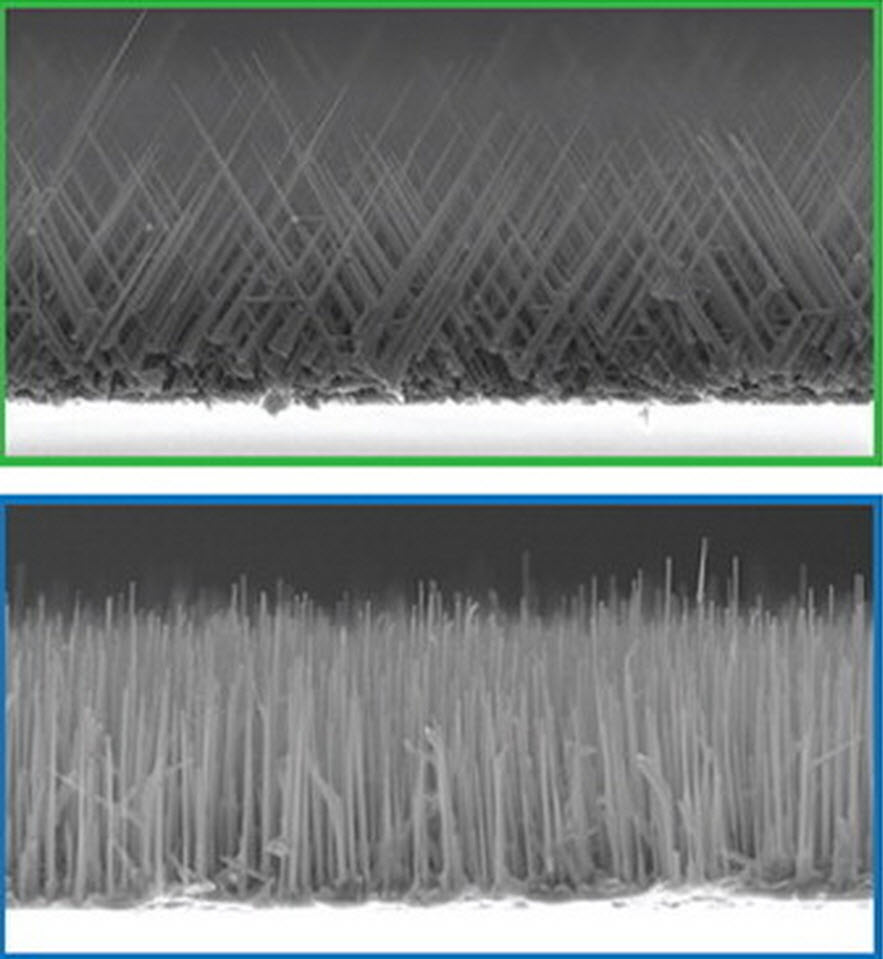Precision growth of light-emitting nanowires
February 13, 2015
Lawrence Berkeley National Lab (Berkeley Lab) scientists have demonstrated a new technique for growing nanowires with control over their light-emitting and electronic properties, using specially engineered catalysts.
The new approach could allow for making better next-generation devices such as solar cells, light emitting diodes, and high-power electronics, says Shaul Aloni, staff scientist at Berkeley Lab’s Molecular Foundry, and lead author on the study published in Nano Letters.
The researchers focused on nanowires made of gallium nitride. Normally, researchers use catalysts made of a single metal. The Berkeley team instead decided to use metallic alloys (mixtures) of gold and nickel as catalysts. By altering the concentrations of each of these in the alloy, the researchers could precisely manipulate, even on the same substrate in the same batch, the orientation of the nanowires.
The researchers also showed that depending on the growth direction chosen, different optical properties were observed, thanks to the crystal surfaces exposed at the surface of the nanowire. Aloni says the team will next focus more on the chemistry of the different nanowire surfaces to further tailor the nanowire’s optical properties.
This research was supported by the DOE Office of Science.
Abstract of Catalyst-directed crystallographic orientation control of GaN nanowire growth
In this work, we demonstrate that catalyst composition can be used to direct the crystallographic growth axis of GaN nanowires. By adjusting the ratio of gold to nickel in a bimetallic catalyst, we achieved selective growth of dense, uniform nanowire arrays along two nonpolar directions. A gold-rich catalyst resulted in single-crystalline nanowire growth along the ⟨11̅00⟩ or m axis, whereas a nickel-rich catalyst resulted in nanowire growth along the ⟨112̅0⟩ or a axis. The same growth control was demonstrated on two different epitaxial substrates. Using proper conditions, many of the nanowires were observed to switch direction midgrowth, resulting in monolithic single-crystal structures with segments of two distinct orientations. Cathodoluminescence spectra revealed significant differences in the optical properties of these nanowire segments, which we attribute to the electronic structures of their semipolar {112̅2} or {11̅01} sidewalls.
